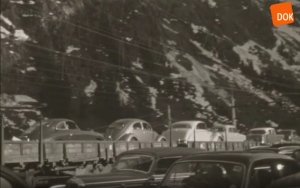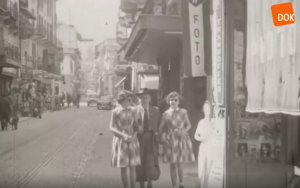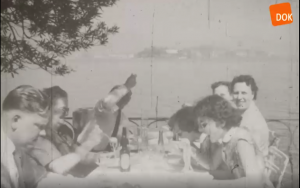Reise Lago Maggiore : Différence entre versions
| (2 révisions intermédiaires par le même utilisateur non affichées) | |||
| Ligne 7 : | Ligne 7 : | ||
|video=LFS_9328_Reise_Lago_Maggiore | |video=LFS_9328_Reise_Lago_Maggiore | ||
|institution_dorigine=Haus des Dokumentarfilms | |institution_dorigine=Haus des Dokumentarfilms | ||
| − | + | |son=Mute | |
| − | |son= | ||
|timecode=00:03:22 | |timecode=00:03:22 | ||
|duree=00:00:00 | |duree=00:00:00 | ||
| − | |||
|format_original=16 mm | |format_original=16 mm | ||
|droits=Landesfilmsammlung BW | |droits=Landesfilmsammlung BW | ||
| Ligne 22 : | Ligne 20 : | ||
|lieuTournage=45.7599, 8.56049 | |lieuTournage=45.7599, 8.56049 | ||
|thematique=Cross-border tourism@ Natural and transformed landscape@ Heritage and tourism sites | |thematique=Cross-border tourism@ Natural and transformed landscape@ Heritage and tourism sites | ||
| + | |Resume_de=Reise zum Lago Maggiore | ||
|Resume_en=Travel to Lake Maggiore 1955 | |Resume_en=Travel to Lake Maggiore 1955 | ||
| − | | | + | |Description_de=Titel: Ostern 1955 / |
| + | Schwenk über Häuser und See vor Bergpanorama; Fahrtaufnahme durch Berglandschaft und entlang See; Verladung des Autos am Gotthard, Fahrt mit dem Autozug; Reise durch Oberitalien: Bellinzona, Madonna del Sasso, Lago Maggiore, Locarno, Stresa, Isola Bella, Lugano, Monte Mottarone. // | ||
|Description_en=Title: Easter 1955 / | |Description_en=Title: Easter 1955 / | ||
Pan over houses and lake in front of mountain panorama; Driving through mountain landscape and along lake; Loading of the car on the Gotthard, journey by car train; Journey through Northern Italy: Bellinzona, Madonna del Sasso, Lago Maggiore, Locarno, Stresa, Isola Bella, Lugano, Monte Mottarone. // | Pan over houses and lake in front of mountain panorama; Driving through mountain landscape and along lake; Loading of the car on the Gotthard, journey by car train; Journey through Northern Italy: Bellinzona, Madonna del Sasso, Lago Maggiore, Locarno, Stresa, Isola Bella, Lugano, Monte Mottarone. // | ||
| − | |||
| − | |||
| − | |||
| − | |||
| − | |||
| − | |||
| − | |||
| − | |||
| − | |||
| − | |||
| − | |||
| − | |||
| − | |||
| − | |||
| − | |||
| − | |||
| − | |||
| − | |||
|Contexte_et_analyse_de=[[Fichier:Lago Maggiore 9328 c.png|vignette|Autoverladung am Lötschbergtunnel (Foto_ LFS)]] | |Contexte_et_analyse_de=[[Fichier:Lago Maggiore 9328 c.png|vignette|Autoverladung am Lötschbergtunnel (Foto_ LFS)]] | ||
Der Privatfilm des Freiburger Architekten Curt Balke und seiner Frau Käthe zusammen mit einer Reisegruppe ist typisch für den aufkommenden Tourismus nach dem Zweiten Weltkrieg und die Italiensehnsucht der Deutschen. Balkes reisten Anfang der 1950er Jahre mehrmals dorthin und dokumentierten es mit ihrer 16mm-Kamera. Die erste Einstellung zeigt die selbstgebastelte Information „Ostern 1955“, was die eindeutige Datierung ermöglicht. Damit beginnen die Aufnahmen der Osterreise des Ehepaars Balke mit ihrem VW Cabrio zum Lago Maggiore quer durch die Schweiz bis nach Italien. Wir sehen schöne Berglandschaften und Uferstraßen am Sempachersee und den Vierwaldstättersee entlang. Käthe Balke filmt während der Fahrt aus dem Auto heraus die vorbeiziehenden Landschaften. Am Seeufer des Vierwaldstättersees machen sie eine Pause und richten ein Picknick. Ins Bild kommt eine Tunneleinfahrt mit dem Wappen für den Kanton Uri mit dem typischen 'Uristier', einem Auerochsenkopf mit rotem Nasenring und roter Zunge. Am Vierwaldstättersee legt Frau Balke nach einer Rast am Seeufer vor der Bergkulisse die Decke zusammen. Es folgt die Autoverladung in Kandersteg am Lötschberg mit zahlreich wartenden Fahrzeugen. Auch dies ein Indiz, dass es noch viele andere in den Süden zieht. Der Lötschbergtunnel ist ein 14,6 km langer Eisenbahntunnel, der das Kandertal im Berner Oberland mit dem Kanton Wallis verbindet. Ein Zug ist bereits fertig verladen für die Tunneldurchfahrt, und in den Autos erkennt man die Insassen. Balkes filmen, wie der wartende Zug abfährt, bevor sie selber auf ihrem Zug in den Tunnel einfahren. | Der Privatfilm des Freiburger Architekten Curt Balke und seiner Frau Käthe zusammen mit einer Reisegruppe ist typisch für den aufkommenden Tourismus nach dem Zweiten Weltkrieg und die Italiensehnsucht der Deutschen. Balkes reisten Anfang der 1950er Jahre mehrmals dorthin und dokumentierten es mit ihrer 16mm-Kamera. Die erste Einstellung zeigt die selbstgebastelte Information „Ostern 1955“, was die eindeutige Datierung ermöglicht. Damit beginnen die Aufnahmen der Osterreise des Ehepaars Balke mit ihrem VW Cabrio zum Lago Maggiore quer durch die Schweiz bis nach Italien. Wir sehen schöne Berglandschaften und Uferstraßen am Sempachersee und den Vierwaldstättersee entlang. Käthe Balke filmt während der Fahrt aus dem Auto heraus die vorbeiziehenden Landschaften. Am Seeufer des Vierwaldstättersees machen sie eine Pause und richten ein Picknick. Ins Bild kommt eine Tunneleinfahrt mit dem Wappen für den Kanton Uri mit dem typischen 'Uristier', einem Auerochsenkopf mit rotem Nasenring und roter Zunge. Am Vierwaldstättersee legt Frau Balke nach einer Rast am Seeufer vor der Bergkulisse die Decke zusammen. Es folgt die Autoverladung in Kandersteg am Lötschberg mit zahlreich wartenden Fahrzeugen. Auch dies ein Indiz, dass es noch viele andere in den Süden zieht. Der Lötschbergtunnel ist ein 14,6 km langer Eisenbahntunnel, der das Kandertal im Berner Oberland mit dem Kanton Wallis verbindet. Ein Zug ist bereits fertig verladen für die Tunneldurchfahrt, und in den Autos erkennt man die Insassen. Balkes filmen, wie der wartende Zug abfährt, bevor sie selber auf ihrem Zug in den Tunnel einfahren. | ||
| Ligne 56 : | Ligne 38 : | ||
Der Film zeigt eine vergnügliche Reisegruppe, die sichtlich das 'Dolce Vita' im Urlaubsland Italien genießt. Immer wieder werden schöne Bilder der Uferpromenaden mit südländischer Vegetation, Landschaftseindrücke mit Bergpanoramen, Ausflüge bzw. Überfahrten mit dem Schiff und das Leben in den Ortschaften festgehalten. In einer Einstellung wird ein Kind in Tracht geradezu in die Kamera gehalten. Die Aufnahmen enden mit einem Ausflug mit der Bergbahn von Stresa hinauf zum Mottarone-Gipfel, wo sich der Schnee im April noch deutlich gehalten hat. | Der Film zeigt eine vergnügliche Reisegruppe, die sichtlich das 'Dolce Vita' im Urlaubsland Italien genießt. Immer wieder werden schöne Bilder der Uferpromenaden mit südländischer Vegetation, Landschaftseindrücke mit Bergpanoramen, Ausflüge bzw. Überfahrten mit dem Schiff und das Leben in den Ortschaften festgehalten. In einer Einstellung wird ein Kind in Tracht geradezu in die Kamera gehalten. Die Aufnahmen enden mit einem Ausflug mit der Bergbahn von Stresa hinauf zum Mottarone-Gipfel, wo sich der Schnee im April noch deutlich gehalten hat. | ||
| + | |||
| + | André Pörner | ||
| + | |Contexte_et_analyse_en=[[Fichier:Lago Maggiore 9328 c.png|vignette|Car loading on train at the Lötschberg tunnel (Foto_ LFS)]] | ||
| + | The private film by the Freiburg architect Curt Balke and his wife Käthe together with a group of travellers is typical of the emerging tourism after the Second World War and the Germans' longing for Italy. The Balkes traveled there several times in the early 1950s and documented it with their 16mm camera. The first shot shows the self-made information "Eastern 1955", which enables the clear dating. This is the beginning of the recordings of the Balke couple's Eastern trip with their VW convertible to Lake Maggiore across Switzerland to Italy. We see beautiful mountain landscapes and riverside roads along the Sempachersee and the Vierwaldstättersee. While driving, Käthe Balke films the passing landscapes from the car. They take a break on the shores of Lake Lucerne and set up a picnic. The picture shows a tunnel entrance with the coat of arms for the canton of Uri with the typical 'Uristier', an aurochs head with a red nose ring and a red tongue. At Lake Lucerne, Ms. Balke folds the blankets in front of the mountain scenery after a rest on the lakeshore. The car is then loaded in Kandersteg am Lötschberg with numerous waiting vehicles. This is also an indication that many others are drawn to the south. The Lötschberg tunnel is a 14.6 km long railway tunnel that connects the Kandertal in the Bernese Oberland with the canton of Valais. A train is already loaded for passage through the tunnel, and you can see the occupants in the cars. Balkes film the waiting train before they enter the tunnel themselves on their train. | ||
| + | |||
| + | [[Fichier:Lago Maggiore 9328 i.png|vignette|City stroll by Curt Balke (Foto: LFS)]] | ||
| + | |||
| + | The next shots again show beautiful snow-covered mountain ranges and a waterfall. On their journey through Switzerland, the Balkes reach the town of Bellinzona in the canton of Ticino, which can be recognized by the imposing fortress 'Castelgrande'. Since the year 2000, this complex, together with the two other medieval castles and fortifications, has been part of the UNESCO World Heritage. The view of the fortress was likely taken from the old town of Bellinzona. Other shots show impressions of the old town, including the striking tower of the Palazzo comunale (town hall) and the hustle and bustle of the city. A large archway with a plaque and a statue comes into the picture. The camera is very moving and pans over the sights. In one take, Balke holds three enamel signs on a pub that advertise refreshing digestifs and beer from Bellinzona. The following camera pans capture more impressions of the landscape before Ms. Balke comes into the picture with a view of the monastery around the pilgrimage church “Madonna del Sasso”, which can be found above Locarno on the northern shore of the lake. Balkes visit the place of pilgrimage, document a coffee tour with other fellow travelers and show the guest room with the large window adorned with wrought-iron ornaments in one swing before they continue. | ||
| + | |||
| + | [[Fichier:Lago Maggiore 9328 j.png|vignette|The tour group enjoys the Italian food (Foto: LFS)]] | ||
| + | |||
| + | And there it is, Lake Maggiore, filmed from a moving car. After a good minute, the landscape and the lake fly by. Until the tour group decides to switch to the water and cross the lake with a car ferry from Verbania on the Piedmontese side of the lake to Laveno in Lombardy. To this day it is the only car ferry connection on Lake Maggiore. In the next sequence one can see the two characteristic towers of the city of Verbania. The exuberant-looking tour group continues to travel along the lake. Sights and places keep coming into the picture. Among other things, the company makes a stop at a lakeside promenade to get on a ship and enjoy the trip across the water. Unusual stone buildings that appear to the starboard side of the lake arouse Curt Balke's architectural interest. | ||
| + | |||
| + | You then see holiday shots with a church tour, narrow streets with stairs in Stresa and the troop strolling in the shopping street and on the promenade. Curt Balke strolls arm in arm with his wife. A boat takes you to the garden island Isola Bella, which is about 400 meters from Stresa on the Piedmontese side in the Lago. The 'beautiful island' is built on with beautiful tiered, baroque gardens and a palace, which still attract tourists today. Only a few sections of the complex with numerous statues and arcades can be seen in the photos before two men in dark clothes with matching hats come into the picture. | ||
| + | |||
| + | The film shows a hilarious tour group who are visibly enjoying the 'Dolce Vita' in Italy as a holiday destination. Again and again beautiful pictures of the promenades with southern vegetation, impressions of the landscape with mountain panoramas, excursions or crossings by ship and life in the villages are captured. In one shot, a child in costume is held up to the camera. The recordings end with a trip with the mountain railway from Stresa up to the Mottarone summit, where the snow still clearly remained in April. | ||
André Pörner | André Pörner | ||
|Bibliographie=Autozug: https://www.myswissalps.com/de/auto/autozug (konsultiert 10.11.2020); Bellinzona: https://www.myswitzerland.com/en-au/destinations/bellinzona/ (konsultiert 10.11.2020); Lago Maggiore: https://www.lagomaggiore.de (konsultiert 10.11.2020); Lötschbergtunnel: https://de.wikipedia.org/wiki/Lötschbergtunnel (konsultiert 10.11.2020); Madonna del Sasso: https://de.wikipedia.org/wiki/Madonna_del_Sasso (konsultiert 10.11.2020); Vierwaldstättersee: https://de.wikipedia.org/wiki/Vierwaldstättersee (konsultiert 10.11.2020). | |Bibliographie=Autozug: https://www.myswissalps.com/de/auto/autozug (konsultiert 10.11.2020); Bellinzona: https://www.myswitzerland.com/en-au/destinations/bellinzona/ (konsultiert 10.11.2020); Lago Maggiore: https://www.lagomaggiore.de (konsultiert 10.11.2020); Lötschbergtunnel: https://de.wikipedia.org/wiki/Lötschbergtunnel (konsultiert 10.11.2020); Madonna del Sasso: https://de.wikipedia.org/wiki/Madonna_del_Sasso (konsultiert 10.11.2020); Vierwaldstättersee: https://de.wikipedia.org/wiki/Vierwaldstättersee (konsultiert 10.11.2020). | ||
}} | }} | ||
Version actuelle datée du 8 avril 2021 à 17:11
Résumé
Description
Title: Easter 1955 /
Pan over houses and lake in front of mountain panorama; Driving through mountain landscape and along lake; Loading of the car on the Gotthard, journey by car train; Journey through Northern Italy: Bellinzona, Madonna del Sasso, Lago Maggiore, Locarno, Stresa, Isola Bella, Lugano, Monte Mottarone. //
Contexte et analyse
The private film by the Freiburg architect Curt Balke and his wife Käthe together with a group of travellers is typical of the emerging tourism after the Second World War and the Germans' longing for Italy. The Balkes traveled there several times in the early 1950s and documented it with their 16mm camera. The first shot shows the self-made information "Eastern 1955", which enables the clear dating. This is the beginning of the recordings of the Balke couple's Eastern trip with their VW convertible to Lake Maggiore across Switzerland to Italy. We see beautiful mountain landscapes and riverside roads along the Sempachersee and the Vierwaldstättersee. While driving, Käthe Balke films the passing landscapes from the car. They take a break on the shores of Lake Lucerne and set up a picnic. The picture shows a tunnel entrance with the coat of arms for the canton of Uri with the typical 'Uristier', an aurochs head with a red nose ring and a red tongue. At Lake Lucerne, Ms. Balke folds the blankets in front of the mountain scenery after a rest on the lakeshore. The car is then loaded in Kandersteg am Lötschberg with numerous waiting vehicles. This is also an indication that many others are drawn to the south. The Lötschberg tunnel is a 14.6 km long railway tunnel that connects the Kandertal in the Bernese Oberland with the canton of Valais. A train is already loaded for passage through the tunnel, and you can see the occupants in the cars. Balkes film the waiting train before they enter the tunnel themselves on their train.
The next shots again show beautiful snow-covered mountain ranges and a waterfall. On their journey through Switzerland, the Balkes reach the town of Bellinzona in the canton of Ticino, which can be recognized by the imposing fortress 'Castelgrande'. Since the year 2000, this complex, together with the two other medieval castles and fortifications, has been part of the UNESCO World Heritage. The view of the fortress was likely taken from the old town of Bellinzona. Other shots show impressions of the old town, including the striking tower of the Palazzo comunale (town hall) and the hustle and bustle of the city. A large archway with a plaque and a statue comes into the picture. The camera is very moving and pans over the sights. In one take, Balke holds three enamel signs on a pub that advertise refreshing digestifs and beer from Bellinzona. The following camera pans capture more impressions of the landscape before Ms. Balke comes into the picture with a view of the monastery around the pilgrimage church “Madonna del Sasso”, which can be found above Locarno on the northern shore of the lake. Balkes visit the place of pilgrimage, document a coffee tour with other fellow travelers and show the guest room with the large window adorned with wrought-iron ornaments in one swing before they continue.
And there it is, Lake Maggiore, filmed from a moving car. After a good minute, the landscape and the lake fly by. Until the tour group decides to switch to the water and cross the lake with a car ferry from Verbania on the Piedmontese side of the lake to Laveno in Lombardy. To this day it is the only car ferry connection on Lake Maggiore. In the next sequence one can see the two characteristic towers of the city of Verbania. The exuberant-looking tour group continues to travel along the lake. Sights and places keep coming into the picture. Among other things, the company makes a stop at a lakeside promenade to get on a ship and enjoy the trip across the water. Unusual stone buildings that appear to the starboard side of the lake arouse Curt Balke's architectural interest.
You then see holiday shots with a church tour, narrow streets with stairs in Stresa and the troop strolling in the shopping street and on the promenade. Curt Balke strolls arm in arm with his wife. A boat takes you to the garden island Isola Bella, which is about 400 meters from Stresa on the Piedmontese side in the Lago. The 'beautiful island' is built on with beautiful tiered, baroque gardens and a palace, which still attract tourists today. Only a few sections of the complex with numerous statues and arcades can be seen in the photos before two men in dark clothes with matching hats come into the picture.
The film shows a hilarious tour group who are visibly enjoying the 'Dolce Vita' in Italy as a holiday destination. Again and again beautiful pictures of the promenades with southern vegetation, impressions of the landscape with mountain panoramas, excursions or crossings by ship and life in the villages are captured. In one shot, a child in costume is held up to the camera. The recordings end with a trip with the mountain railway from Stresa up to the Mottarone summit, where the snow still clearly remained in April.
André PörnerPersonnages identifiés
Lieux ou monuments
Bibliographie
- ↑ Cette fiche est en cours de rédaction. À ce titre elle peut être inachevée et contenir des erreurs.








